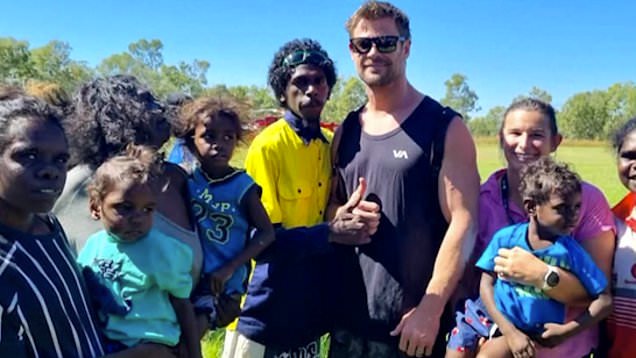Scar Cover Up Tattoos – What you need to know

Introduction
Scar cover up tattoos have become popular as an effective way to hide scars and regain confidence. Whether the scars are from surgeries, burns, accidents, or self-harm, scar cover up tattoos can provide a solution for those who want to hide the visible reminders of their past.
Before getting a scar cover up tattoo, it’s important to know what’s involved in the process. This article aims to give you all the information you need before making a decision.
The purpose of scar cover up tattoos is not just to hide the scar but also to turn it into something beautiful. It’s about taking back control of your body and rewriting your story.
In this article, we’ll discuss how scar cover up tattoos can effectively hide scars from different causes. We’ll also look at the challenges of covering scars, like how ink stays on scar tissue and limitations for certain types of scars and skin conditions.
By the end of this article, you’ll understand everything about getting a scar cover up tattoo:
- Consultations and design considerations
- Managing pain during the tattooing process
- Proper healing and aftercare
- Tips for finding a professional tattoo artist who specializes in scar cover ups
So if you have scars you want to hide or if you’re just curious about scar cover up tattoos, keep reading to learn everything before taking the next step towards reclaiming your body and embracing your healing journey.
Understanding Scar Cover Up Tattoos
Scar camouflage tattoos are an effective way to conceal scars from various causes, including surgeries, burns, accidents, and self-harm. These tattoos use specialized techniques and designs to create a visually appealing cover-up that helps individuals regain confidence in their appearance.
Challenges of Covering Scars with Tattoos
When it comes to covering scars with tattoos, there are some challenges that need to be considered:
- Ink retention on scar tissue: Scar tissue doesn’t hold ink as well as regular skin, which can affect the longevity and vibrancy of the tattoo. It may require additional touch-ups or sessions to achieve the desired result.
- Suitability of scars for tattooing: Not all scars are suitable for cover-up tattoos. Certain types of scars, such as keloids or raised scars, may not respond well to tattooing.
- Skin conditions: Individuals with certain skin conditions, like psoriasis or eczema, may need to consult with a dermatologist before getting a scar cover up tattoo.
Techniques Used in Scar Cover Up Tattoos
To overcome these challenges and ensure successful scar cover up tattoos, experienced tattoo artists employ specific techniques and design approaches:
- Organic/Textured Designs: Tattoo designs with organic shapes and textures work best for scar cover ups. These designs help blend the scar into the surrounding skin and create a more seamless appearance.
- Color Matching: Skilled artists carefully select ink colors that closely match the individual’s skin tone. This ensures that the tattoo blends in naturally with the surrounding skin and makes the scar less noticeable.
- 3D Effect: Some artists use shading techniques to create a three-dimensional effect on the scarred area. This technique adds depth to the design and further conceals the scar.
It’s important to note that scar cover up tattoos may not completely erase the visibility of scars but can significantly minimize their appearance. Each case is unique, and consultation with a professional tattoo artist like those at Ink Illusion is crucial to determine the best approach for an individual’s specific scar.
By understanding the possibilities and limitations of scar cover up tattoos, individuals can make informed decisions about whether this option is right for them. It’s advisable to research artists who specialize in scar cover ups and view their portfolios to gauge their expertise in this area.
The Process of Getting a Scar Cover Up Tattoo
1. Consultation and Design Stage
When you decide to get a scar cover up tattoo, the first crucial step is the consultation with a skilled tattoo artist. This initial meeting serves as an opportunity for you to discuss your concerns, desired outcome, and any specific requirements related to the scar you want to conceal. During this stage, here’s what you can expect:
- Discussion of Concerns: The tattoo artist will take the time to understand your concerns regarding the scar and how you envision it being concealed. They may ask about the scar’s origin, its texture, and any sensitivities associated with it.
- Assessment of the Scar: The artist will assess the scar carefully, considering factors such as its size, color, and texture. This evaluation is crucial for determining the most suitable approach for covering the scar effectively.
- Tailored Design Considerations: Based on the consultation, the tattoo artist will provide insights into designing a tattoo that not only conceals the scar but also complements your body’s natural contours. They may recommend specific design elements or placement options that work best for scar cover ups.
The consultation and design stage are essential for establishing clear communication between you and the tattoo artist. It sets the foundation for a collaborative approach towards achieving the desired result.
2. The Tattooing Process, Pain Management, and Sensations
When it comes to scar cover up tattoos, the tattooing process differs significantly when working on scarred skin. Here’s what you need to know about the tattooing process, pain management, and the sensations associated with scar cover up tattoos:
Tattooing Process on Scarred Skin
Tattooing on scarred skin requires meticulous attention to detail. The texture and composition of scar tissue can pose challenges for tattoo application. A skilled tattoo artist will need to adapt their technique to ensure that the ink is properly absorbed and distributed in the scarred area. This often involves using different needle configurations, adjusting the depth of the tattoo, and carefully working around any irregularities in the skin.
Multiple Sessions for Best Results
Due to the nature of scar tissue, multiple tattoo sessions may be necessary to achieve the best results. Scar cover up tattoos often require layering and building up the design gradually, allowing time for the skin to heal and the ink to settle between sessions. This approach helps prevent overworking the scarred area and allows for adjustments to be made as the tattoo progresses, ensuring a more natural and effective coverage of the scar.
Pain Management during Scar Cover Up Tattoo
Managing pain during a scar cover up tattoo is crucial for a comfortable experience. Since scar tissue can be more sensitive than normal skin, especially if it resulted from recent trauma or surgery, it’s important to discuss pain management options with your tattoo artist.
Understanding Sensations and Using Topical Anesthetics
It’s worth noting that individuals have varying pain thresholds and sensations during tattoo sessions. While some may find discomfort tolerable, others might experience higher levels of pain. To address this issue, topical anesthetics are commonly used during scar cover up tattoo sessions. These numbing agents are applied to the skin before the tattooing process begins, helping to reduce sensations of pain and discomfort during the procedure. Your tattoo artist can recommend suitable topical anesthetics based on your individual needs and sensitivity levels.
As you consider getting a scar cover up tattoo, understanding how the tattooing process differs on scarred skin, exploring pain management options, and being aware of the sensations involved will contribute to a smoother and more informed experience. Working closely with a professional tattoo artist who specializes in scar cover ups will ensure that your concerns are addressed and that you receive personalized care throughout the process.
3. Healing and Aftercare for Scar Cover Up Tattoos
When it comes to scar cover up tattoos, attention to detail is crucial for achieving the best results. The healing process and aftercare play a significant role in maintaining the quality of your scar cover up tattoo. In this section, we will discuss the importance of allowing the scar to fully heal before getting a cover up tattoo, specific care instructions during the healing process, and tips for aftercare.
Importance of Allowing the Scar to Fully Heal
Before considering a scar cover up tattoo, it’s essential to ensure that the scar is fully healed. Tattooing over a fresh or still-healing scar can cause damage and hinder the effectiveness of the cover up. Patience is key here, as rushing into a tattoo before the scar has properly healed can lead to complications and unsatisfactory results.
Specific Care Instructions during the Healing Process
During the healing process, it’s crucial to follow specific care instructions provided by your tattoo artist. Here are some general guidelines:
- Keep it clean: Gently wash your tattooed area twice a day with mild soap and lukewarm water. Avoid scrubbing or using harsh products that may irritate the skin.
- Moisturize regularly: Apply a thin layer of fragrance-free and hypoallergenic moisturizer recommended by your tattoo artist. Keeping the skin hydrated helps in preventing dryness and itchiness.
- Avoid direct sunlight: Protect your scar cover up tattoo from prolonged sun exposure, especially during the initial healing phase. Overexposure to sunlight can cause fading and damage to the tattooed area.
- Don’t pick or scratch: It’s normal for scabs to form during the healing process. However, resist the temptation to pick or scratch them as it can disrupt the healing and affect the final outcome.
- Stay away from pools and saunas: Avoid swimming pools, hot tubs, saunas, or any activities that involve soaking in water until your tattoo is fully healed. These environments can introduce bacteria and prolong the healing process.
- Be mindful of clothing: Choose loose-fitting and breathable clothing to prevent friction and irritation on the tattooed area. Avoid wearing tight or rough fabrics that may rub against the fresh tattoo.
Tips for Aftercare
Once your scar cover up tattoo has fully healed, it’s important to maintain its quality for the long term. Here are some tips for aftercare:
- Apply sunscreen: Protect your scar cover up tattoo from fading by applying a broad-spectrum sunscreen with at least SPF 30 when exposed to sunlight. Reapply as needed, especially during prolonged sun exposure.
- Keep the skin moisturized: Even after healing, continue to moisturize the tattooed area regularly to keep the skin hydrated and maintain the vibrancy of the colors.
- Avoid excessive exfoliation: Refrain from using harsh scrubs or exfoliants directly on the tattooed area as it can fade the ink over time.
- Stay hydrated: Drinking plenty of water helps keep your skin healthy and can contribute to maintaining the overall appearance of your scar cover up tattoo.
By following these care instructions and tips, you can ensure that your scar cover up tattoo heals properly and remains vibrant for years to come.
Remember, everyone’s healing process may vary slightly, so it’s essential to consult with your tattoo artist for personalized advice and recommendations based on your specific situation. They will provide you with detailed aftercare instructions tailored to your scar cover up tattoo.
Finding a Professional Tattoo Artist for Your Scar Cover Up
When it comes to getting a scar cover up tattoo, it is crucial to choose a professional tattoo artist who specializes in this specific area. Here are some important considerations and tips to help you find the right artist for your scar cover up:
1. Experience and Expertise
- Look for a tattoo artist who has experience in working with scars and has successfully completed scar cover up tattoos in the past.
- Check their portfolio to see if they have examples of scar cover ups that match your desired outcome.
- An experienced artist will understand the unique challenges of working with scar tissue and will be able to create a design that effectively conceals your scar.
2. Research and Recommendations
- Take the time to research different tattoo artists in your area who specialize in scar cover ups.
- Read reviews and testimonials from previous clients to gauge their satisfaction with the artist’s work.
- Ask for recommendations from friends, family, or support groups who have undergone scar cover up tattoos. They may be able to provide valuable insights based on their experiences.
3. Consultation Process
- Schedule consultations with multiple tattoo artists to discuss your scar cover up tattoo.
- During the consultation, ask the artist about their experience with scar cover ups and request to see before and after photos of previous clients.
- Pay attention to how well the artist listens to your concerns and how they address any questions or doubts you may have.
4. Personal Connection
- It is essential to feel comfortable and trust the tattoo artist you choose for your scar cover up.
- Consider their personality, communication style, and whether you feel at ease discussing your scar with them.
- Building a rapport with your tattoo artist will ensure a positive experience throughout the process.
5. Licensing and Safety
- Verify that the tattoo artist you choose is licensed and operates in a clean and safe environment.
- Inquire about their adherence to health and safety regulations, including the use of sterile equipment and proper hygiene practices.
- A reputable tattoo artist will prioritize your safety and well-being during the scar cover up process.
Remember, finding the right tattoo artist for your scar cover up is essential to achieving the desired results. Don’t hesitate to take your time, do thorough research, and consult with multiple artists before making a decision. By choosing an experienced and skilled professional, you can ensure a successful scar cover up tattoo that effectively conceals your scar and boosts your confidence.
Conclusion
Considering scar cover up tattoos can be a significant step towards reclaiming confidence and embracing your body. If you have scars that you wish to conceal, exploring scar cover up tattoos can be a transformative experience.
Consulting with a professional tattoo artist who specializes in scar cover ups is crucial. They can provide personalized advice, recommend suitable designs, and ensure that the process is tailored to your specific needs. By taking this proactive step, you can not only effectively conceal your scars but also embark on a journey of self-empowerment and self-expression.
It’s essential to remember that you are not alone in this journey, and there are skilled professionals who can support you every step of the way.
Remember, the decision to get a scar cover up tattoo should be made thoughtfully, considering both the physical and emotional aspects. By doing so, you can make an informed choice that aligns with your personal preferences and contributes to your overall well-being.










